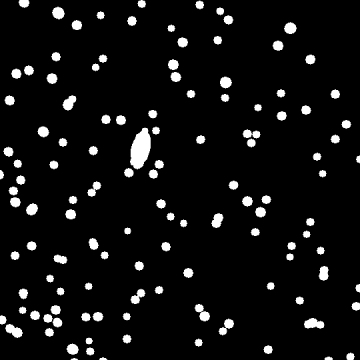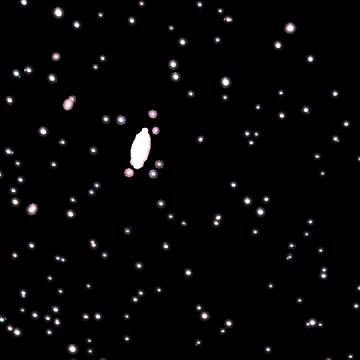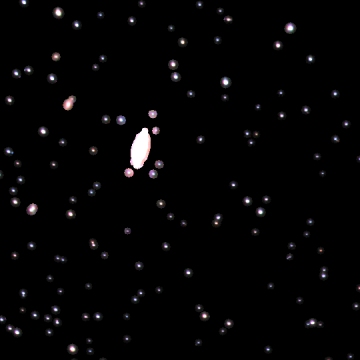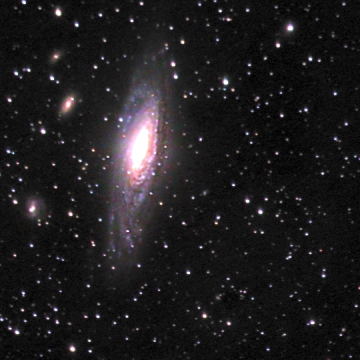Processing steps in reducing the size of intense stars in astro-images
Due to bad seeing or minor guiding errors, intense stars tend to show up oversized in images of weak objects. They become prominently visible in the image. To reduce their size and limit their negative influence on the perception of the image, I use a procedure to 'thin' (or 'erode') their size. Below I show the steps that I follow in this procedure. In this example, a detail of the image of NGC7331 and Stephan's quintet of october 2024 is used. |
 |
A. This detail of the original image shows NGC7331 with many stars that exceed the maximum grey value of the image. Their base has been broadened by atmospheric turbulence, slight guiding errors and (as seen in the upper left corner (which is near the edge of the field-of-view) possible coma. The aim is to reduce the diameter of stars that have an intensity above the background that exceeds the 255 grey-range of the image. (note: all processing is done on de raw data for which the grey-range generally is much larger.) |
||
 |
B. The background of the image is determined by stripping all stars and smoothing the result. The background is the base line: stars exceeding the background by the selected amount (say : 255) are to be processed. |
||
 |
C. A mask is generated by thresholding the original image using the background+255 (255: in this example) and broaden the resulting 'blobs' by a selectable amount. |
||
 |
D. The mask is used to cut the stars out of the original image. These will be placed back after they have been processed to yield a smaller 'footprint'. |
||
 |
E. The cut-out stars and their immediate surroundings are shown here. |
||
 |
F. A minimum filter is applied to the cut-out stars image: The grey value of each pixel is replaced by the minimum grey-value of the pixels in a (in this case) 3x3 pixel area around that pixel (including the central pixel itself). This 'erosion' process reduces the 'footprint' of the selected stars. G. This image is added to the original from which the stars were cut (D. above): see lower left image. |
||
 |
 |
||
| Resulting image with 'thinned' stars | For comparison: The original image (detail) | ||